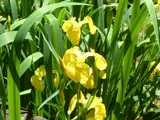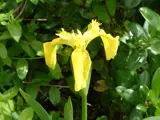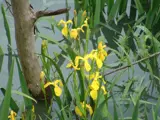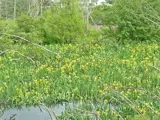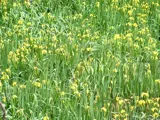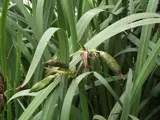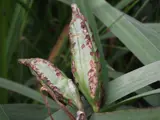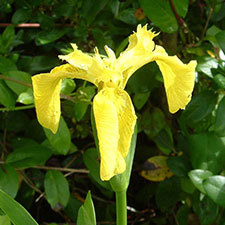 Yellow flag iris
Yellow flag iris
Common name: Yellow flag iris
Botanical name: Iris pseudacorus
Management programme: Progressive Containment
Native to Europe, Asia, and North Africa. Brought to New Zealand as an ornamental garden plant despite flowers typically only lasting a couple of days.
Why is it a pest?
- Roots from yellow flag iris form mats displacing native plants and animals, especially vulnerable species that live on water margins.
- Infestations are known to trap silt and encourage flooding when growing in flowing water and alter water levels in swamps.
- Poisonous seeds may have an impact on birdlife.
- Dense stands hamper fishing and access to water.
Where is it found?
- Yellow flag iris is semi aquatic and can be found along streams, rivers, drains, swampy ground, ponds, lakes and sometimes in gardens.
- It is spread by seed, sprouting from spreading roots, dispersal by water and people cultivating it.
- Yellow flag iris is scattered throughout the Bay of Plenty. It is particularly common around the Rotorua lakes. Smaller sites are also present in Tauranga and Whakatāne. All known sites are being actively controlled by Council.
What does it look like?
- A perennial iris with a strong root system that grows in leafy clumps up to 2m tall.
- Leaves have a distinctive mid-rib and purple colour at the base of each fan-shaped group of leaves.
- The large yellow flowers are seen October to December and generally only one last day.
- Large green seed capsules (2 x 5cm) contain many disc-like seeds.
- Plants growing over water can form rafts of floating rhizomes strong enough to support the weight of a human.
- It is often confused with other ornamental irises.
What are the rules?
Progressive Containment
Progressive Containment species are pests which the Council aims to prevent from spreading, reduce the distribution, or eradicate within parts of the region over time. Council may enforce the control of these pest species.
Council will maintain control and management of yellow flag iris. It is a high-risk species but will not meet the eradication objective and therefore does not lend itself to occupier control responsibilities.
How do you get rid of it?
Please do not attempt to control this plant if you find it. Yellow flag iris is difficult to control. If you find yellow flag iris, please contact the Bay of Plenty Regional Council and they will control it.
Images

